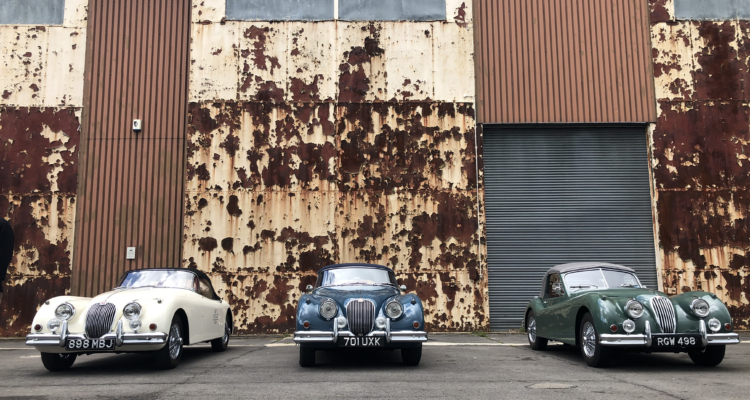Café Racers – What Are They?
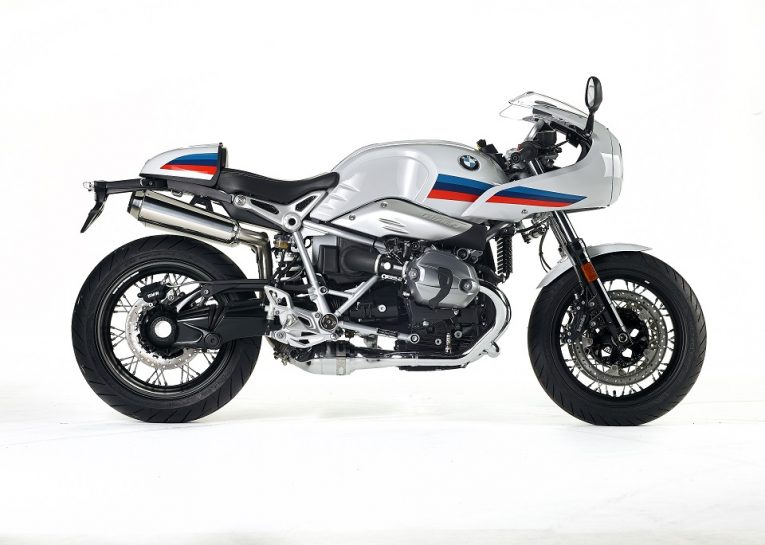
Of all the types and styles of motorcycles, the Café Racer is perhaps one of the best looking, though for a motorcyclist of a certain age, it’s also probably the most uncomfortable to ride.
Characterised by a stripped-down look with low-mounted handlebars, round headlight, high and rear-set footpegs and a faired seat cowling, café racers took their design and styling cues from the grand prix racing bikes of the 1960s and those competing on the Isle of Man TT.
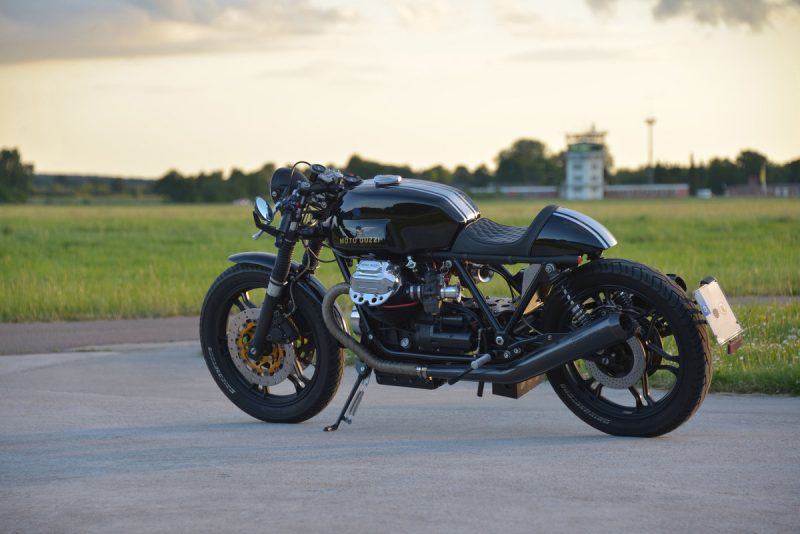
The name derives from the fact that the majority of riders were young and social – rockers, greasers, teddy boys – and as groups, they rode from café to café in the ’60s, hanging out and upsetting the stuffiness of post-war Britain. At each stop, they’d fill up on tea and fags while waiting for their bodies to repair from the uncompromising riding position of the bike before blasting off to the next watering hole.
Café racers were designed to be ridden short distances quickly – it was all about the speed and looking cool, just like the race bikes they were based on. Even the younger riders wouldn’t want to go too far on them. The riding position was too extreme for long distances and anyway, it was easier to be seen looking cool while riding locally in leather jackets, jeans and ‘piss-pot’ helmets.
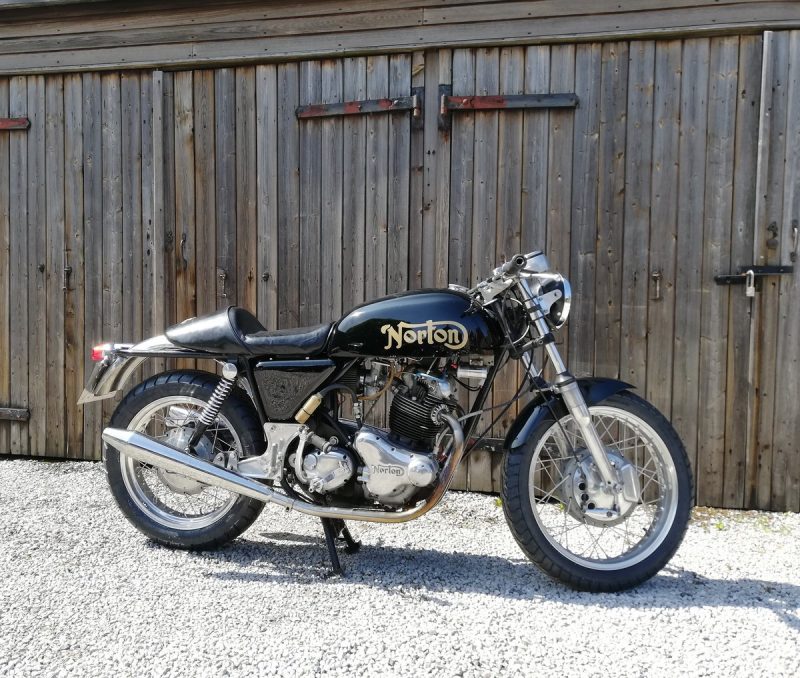
With the Café Racer phenomenon taking root in post-war Britain, it was inevitable the bikes would be British made. Triumphs, BSAs and Nortons, for example, were the mainstay but there were also bespoke creations using engines from any of the above or from Vincent. Chrome and leather were the order of the day.
It didn’t take long for the Japanese manufacturers to cotton on and by the 1970s, there was a slew of café-racer-inspired machinery arriving from the east as GP racing grew in popularity. Often, brute power outshone chassis finesse and sometimes, even competency but it helped to cement the Café Racer’s importance in the motorcycling world.
However, the rise of the sportsbike in the 1980s and 1990s outshone pretty much everything else, with leather-clad overweight middle managers riding alongside under-sexed and over-eager post-teenagers, all trying to get their knees down with varying levels of success.
Café Racers never really went away – there is, as we know, a thriving classic bike scene. However, the appearance of the hipsters in the early 2000s led to a resurgence of all sorts of forced-cool, one of which was the modern retro motorcycle and with it, the Café Racer.
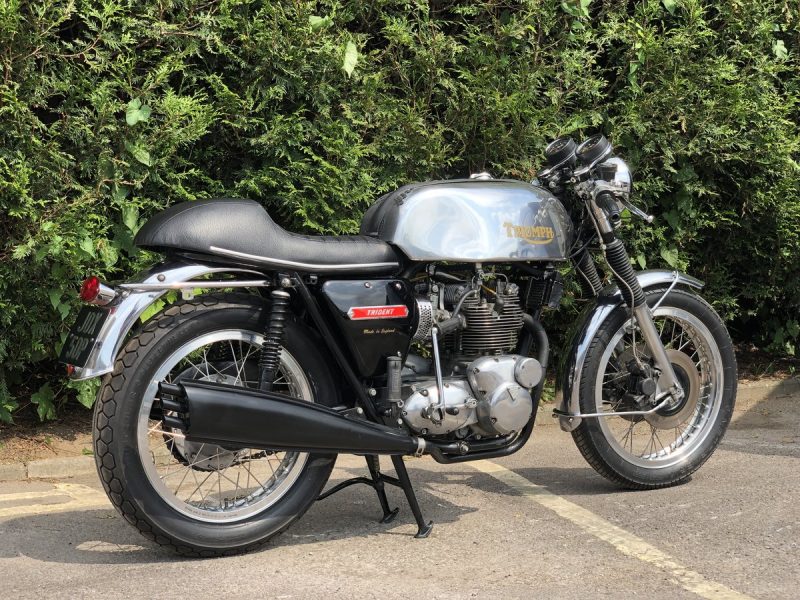
Names such as Triumph and Royal Enfield, as well as Norton, already struggling but well before the catastrophic events of early 2020, began developing motorcycles that conjured up the style and flair of years gone by but with the requirements of modern motorcycling – safety, reliability and comfort.
So there was a brace of motorcycles using water-cooled engines with fake air-cooling fins on the cylinder barrels; fuel-injection throttle bodies designed to look like carburettors; round, analogue rev counters and speedos with subtle digital displays for fuel distance, for example; the invisible tech, such as ABS, traction control and smooth, Euro3 and 4-compliant fuelling.
Inevitably, Café Racer styling was adopted quickly and it wasn’t long before the twizzled moustaches and expensive cheap-looking clothing was to be found once more pootling around on excellent machinery and parking it outside a trendy café in Shoreditch to look good, while the ‘rider’ sipped a skinny-soy-chai-double-decaf-mocha-chocha-latte and discussed politics and music. Or something…
Modern Café Racers
Suzuki SV650X
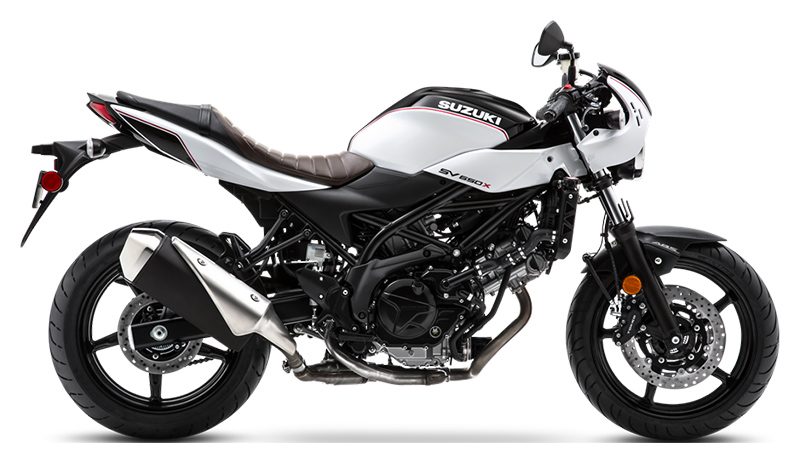
Based on Suzuki’s successful SV650 and its 650cc V-twin engine, the SV650X is perhaps the most cynical styling exercise but the base bike is good enough to carry it off
BMW R nineT Racer
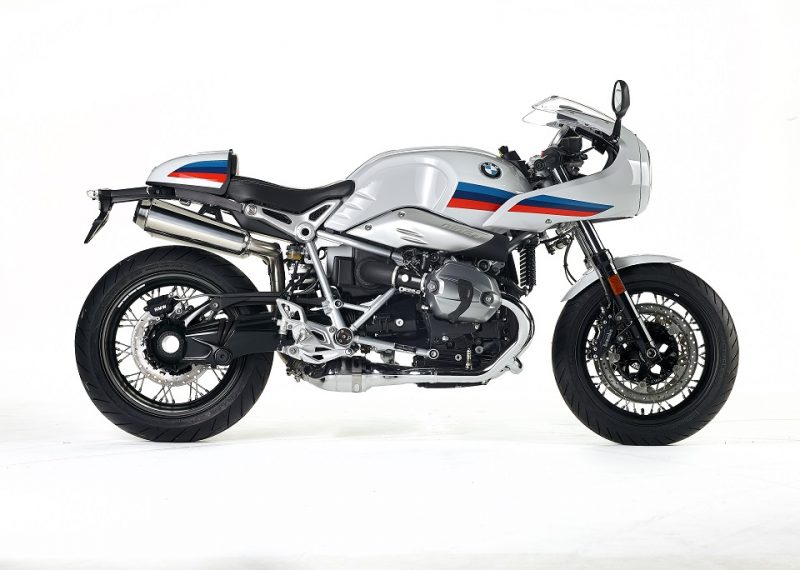
Using the mechanicals from the R nineT range including the 1170cc flat twin boxer engine, the Racer gets a sweeping fairing, low bars and a styling seat cowl
Kawasaki Z900RS Café
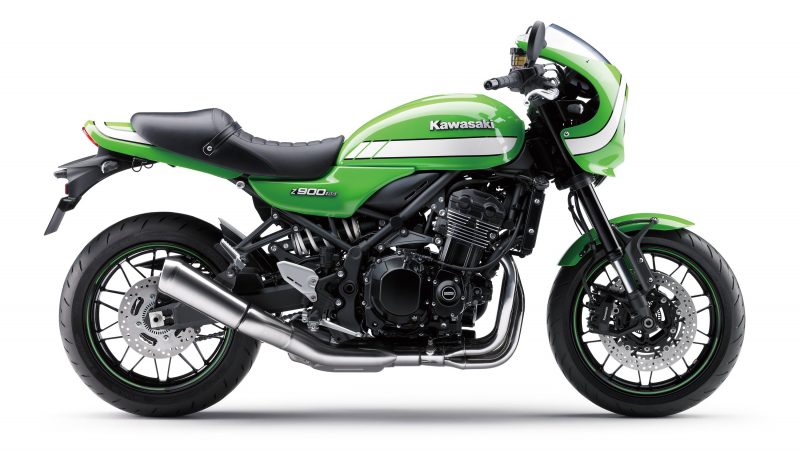
The café is basically the Kawasaki Z900RS, an homage to the iconic Z1 of the 1970s using a thoroughly modern 948cc inline four, with a headlight cowl fitted.
Triumph Thruxton 1200R
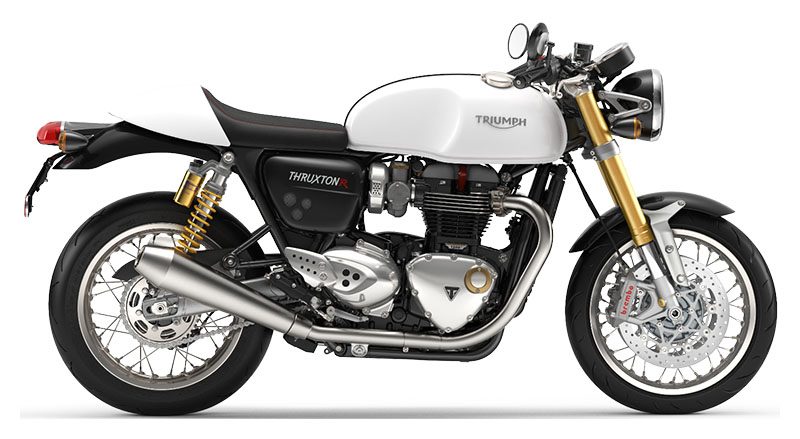
Perhaps the most convincing modern café racer, the Thruxton R has it all wrapped around a thumping 1200cc parallel twin motor.
Kawasaki W800
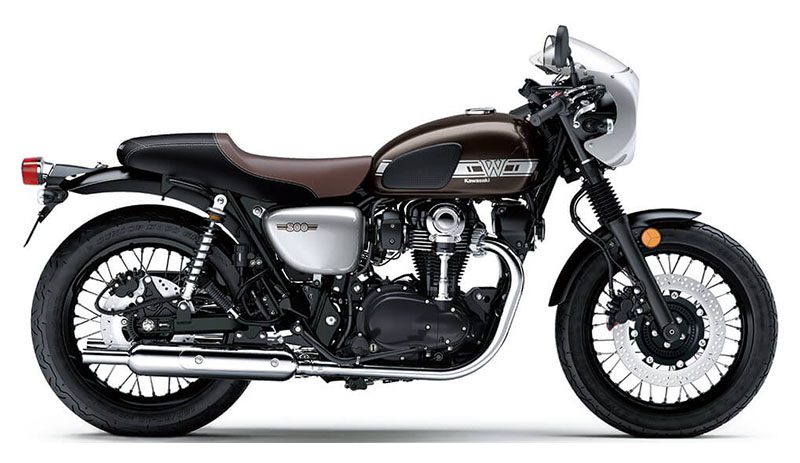
Built for riders with an A2 licence (restricted engine power, to 47bhp), the W800 is another modern retro with café racer styling.
Royal Enfield Continental GT
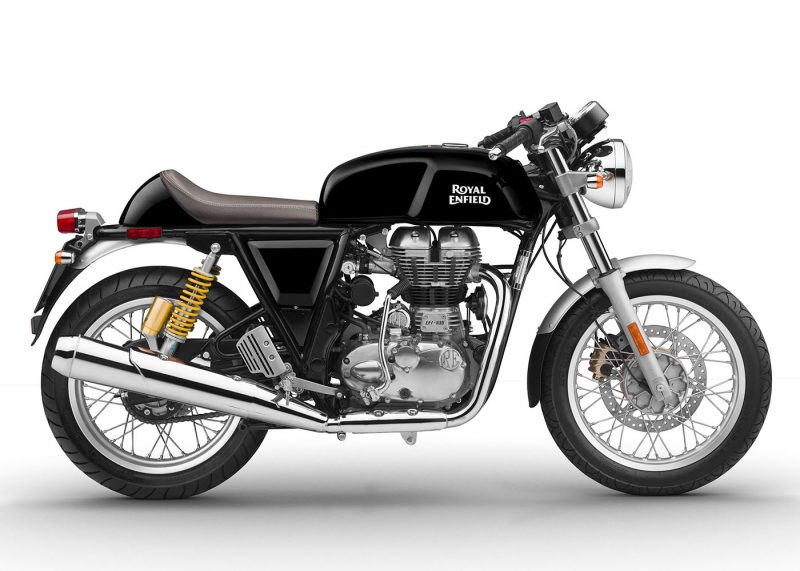
The iconic name returns, this time engineered in the UK and built in India but don’t let that put you off. The Continental GT is a throwback to heady days
Classic Café Racers
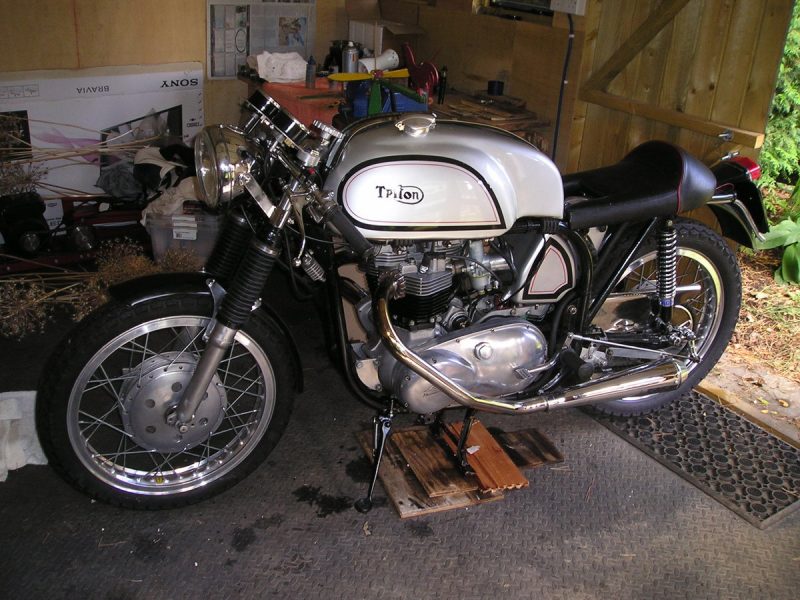
Probably the coolest, most original Café Racer we have seen for a very long time. This is stunning.
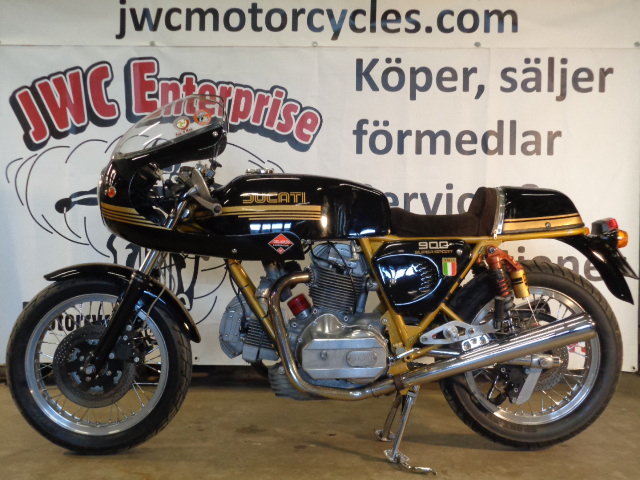
It’s not just British and Japanese manufacturers who went down the Café Racer route. Several European marques, notably Italian, did too and this Ducati is a lovely example
1974 Norton 750 Dunstall Commando
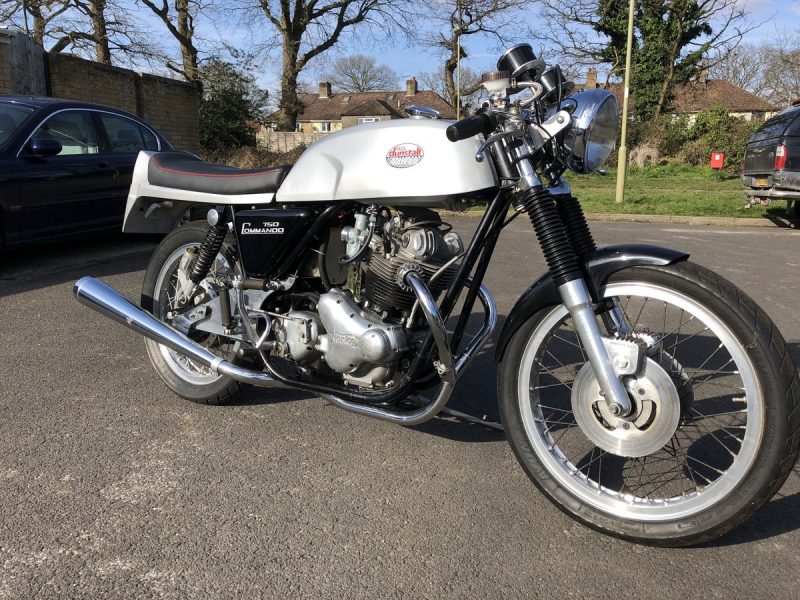
A special built by tuner Paul Dunstall, this is a lovely example of a rare and iconic machine
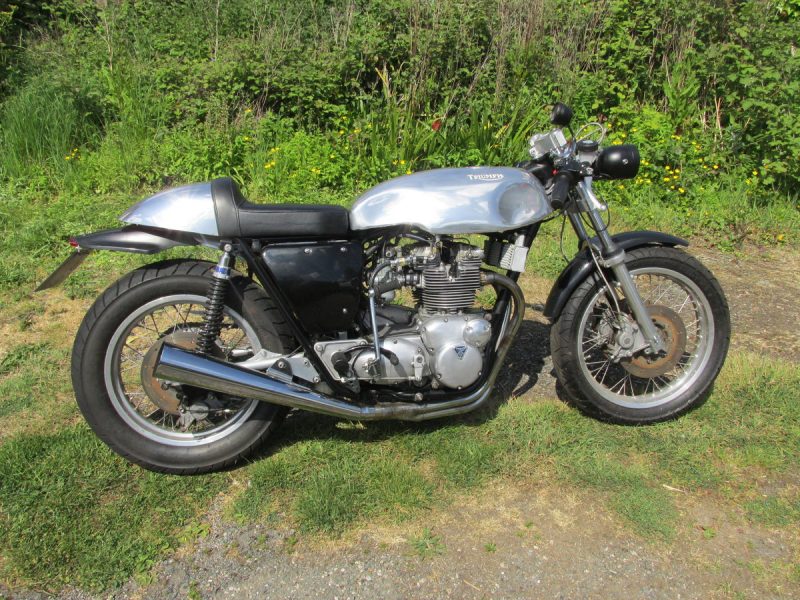
A lovely special with very low miles since it was rebuilt. Full-on race spec but road-legal
Anatomy of a Café Racer
Handlebars – lower, ‘clip-on’ style bars that bolt directly on to the top of the forks, rather than a bent piece of metal that sits on top of them. This brings the rider forward and down into a racing-style tuck
Headlight – a single, round headlight with a small fairing. Looks good but does nothing for aerodynamics
Footpegs – typically set more rearward than other types of motorcycle and slightly higher, to match the forward, tucked riding position
Seat hump – As café racers are based on race bikes, they only need one seat so the pillion is usually covered with an ‘aerodynamic’ hump
Living with a Café Racer
You don’t really ‘live with’ a Café Racer. I had a Suzuki SV650X for a few months and it was great – at what it was great at.
Blasting cross-country to bike shows, meet-ups or just embracing the roots of the bike and heading for a fry-up somewhere, it was fantastic. A stretched out riding position, weight low down and a feeling of exceptional connection with the bike – it was perfect. Wind in the face, the bike responding to every input and reacting instantly. I also did a couple of track days, including the inaugural ‘Café Racer Cup’ at Lyddon Hill and it was great fun on circuit – enough power to be fun, brakes and tyres good enough for my skill levels and nimble enough to make things interesting.
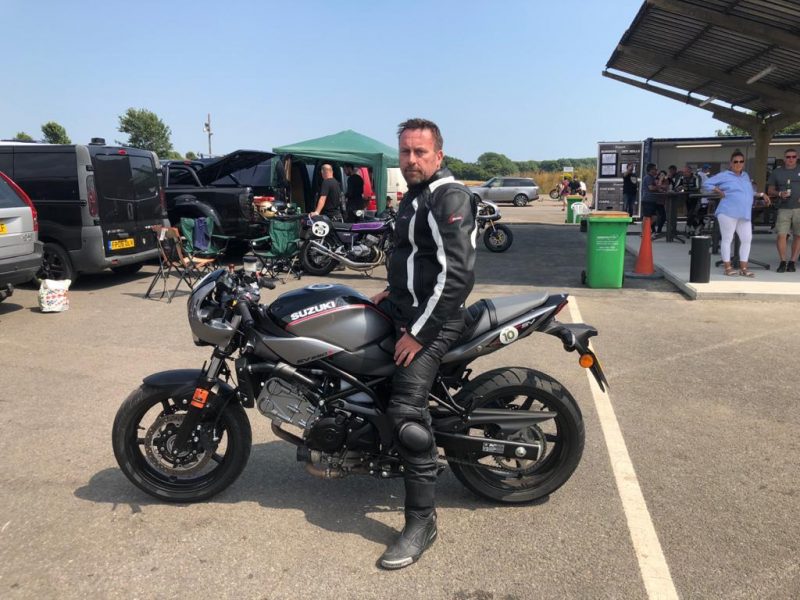
What it wasn’t good at, as we know, is any distance. Blasting up and down the motorways to work was, to put it simply, painful. No protection form the wind or weather meant it was tiring and with the weight forward, even the 75mph wind blast wasn’t enough to take my not-inconsiderable weight off my wrists. But the biggest problem I has was with my back. It’s dubious at the best of time but after an hour sat forward on the racer, it was agony. Two day of commuting was the limit before I had to revert to the car for the rest of the week and double-dose ibuprofen.
But man, when it was good, it was good…
